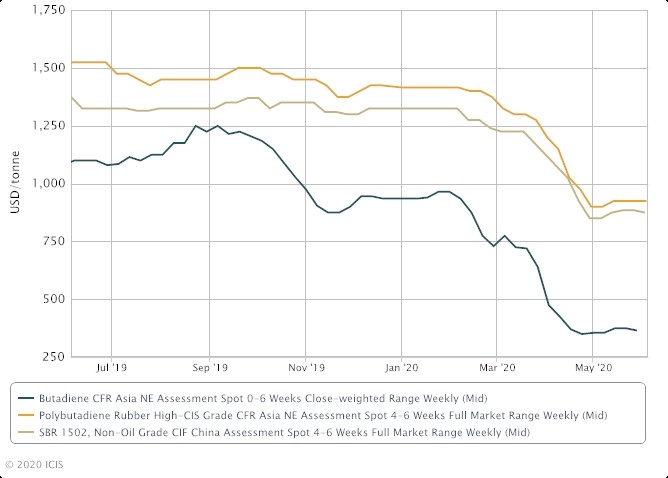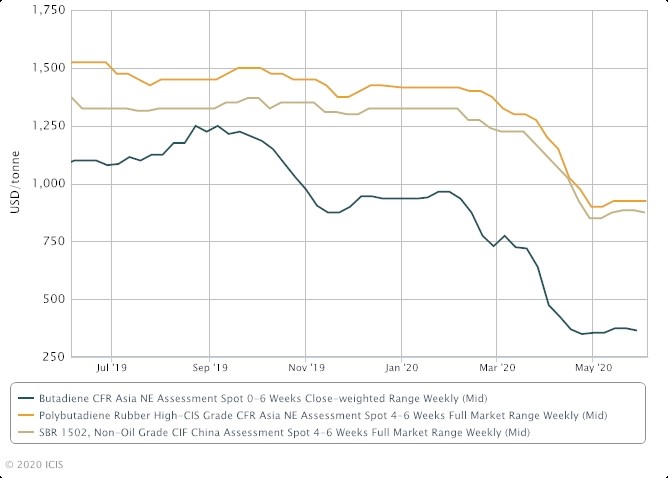SINGAPORE (ICIS)–A supply glut caused by an
influx of deep-sea butadiene (BD) supply from
Europe and the US is expected to weigh on the
Asian BD market in the near term.
About 150,000 tonnes of BD from Europe and the
US have been heading to Asia since early this
year, with large volumes arriving in the second
quarter and more expected to arrive in July and
August.
“There are also available regional cargoes from
southeast Asia and Japan for July delivery, on
top of the deep-sea cargoes coming, so buyers
are in no rush to commit,” a trader said.
“But the arbitrage window may be closing soon
as demand starts to pick up in Europe and the
US,” another trader said.
The influx of deep-sea BD from the EU and the
US to Asia was triggered by fallout from the
coronavirus pandemic, which has battered the
global automotive industry, disrupted supply,
and crippled demand.
BD is a feedstock for synthetic rubber (SR),
including styrene butadiene rubber (SBR) and
polybutadiene rubber (PBR), which are mainly
used as raw materials in the production of
tyres for the automotive industry.
The shortfall of BD in Asia, due to the planned
and unplanned outages, also prompted EU and US
suppliers and traders to channel their surplus
spot material to Asia.
Taiwan’s Formosa Petrochemical Corp (FPCC) is
shutting down its No 3 cracker and 176,000
tonne/year BD extraction unit for a 45-day
maintenance shutdown in mid-August.
A major cracker operator in South Korea, Lotte
Chemical, is also expected to extend the
shutdown of its cracker and 150,000 tonne/year
BD unit till October, after it shut in early
March due to a fire.
In southeast Asia, Malaysia’s Pengerang
Refining and Petrochemical’s (PRefChem)’s
185,000 tonne/year BD unit has been offline
since mid-March following a fire at the
complex.
In the meantime, Chinese spot appetite has
declined due to the softening local downstream
synthetic rubber market.
“Buyers are holding back as the Chinese
domestic market is softening, and they are also
cautious due to the rising US-China tensions,”
a trader said.
However, Asian BD producers were unwilling to
unload BD below $400/tonne CFR (cost and
freight) northeast (NE) Asia for spot
shipments, given that their margins have been
wiped out by the recent surge in the feedstock
naphtha price.
On 29 May, ICIS BD spot price averaged
$365/tonne CFR NE Asia, while the naphtha price
was at $345/tonne CFR Japan at noon on 5 June,
ICIS data showed.
“There are no margins. With naphtha nearly the
same price as BD, it is not sustainable for BD
to remain below $400,” a BD supplier said.

Focus article by Helen Yan
Visit the ICIS
automotive topic page for
analysis of the impact on chemical markets and
links to latest news
Visit the ICIS Coronavirus
topic page for analysis of the impact
on chemical markets and links to latest
news.


